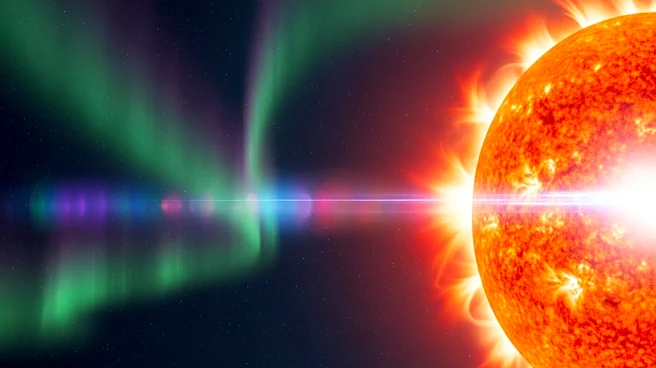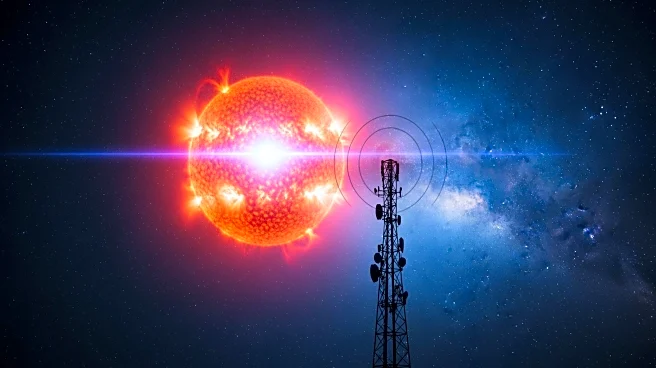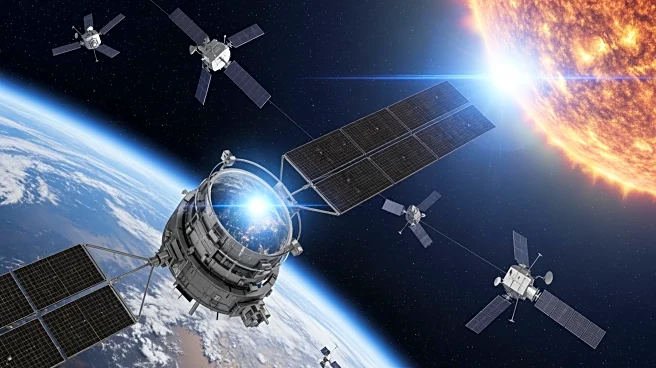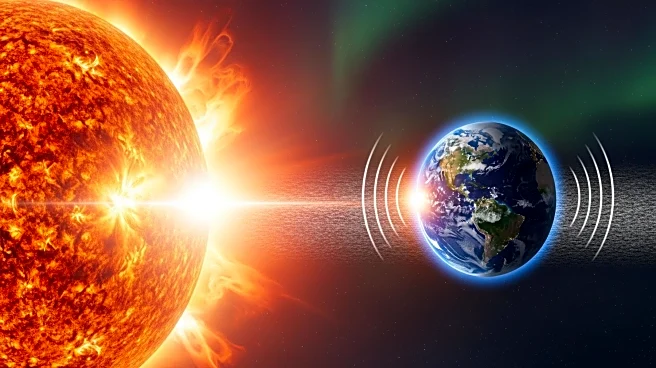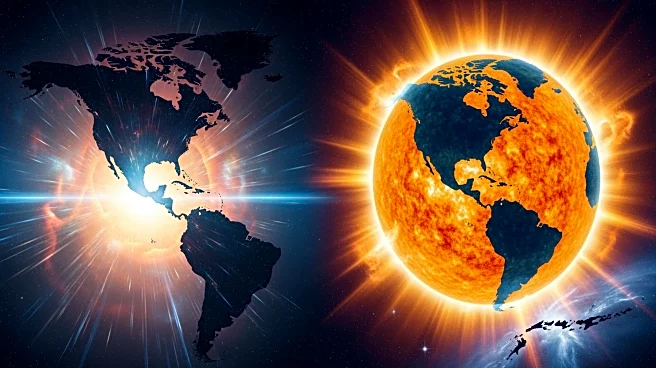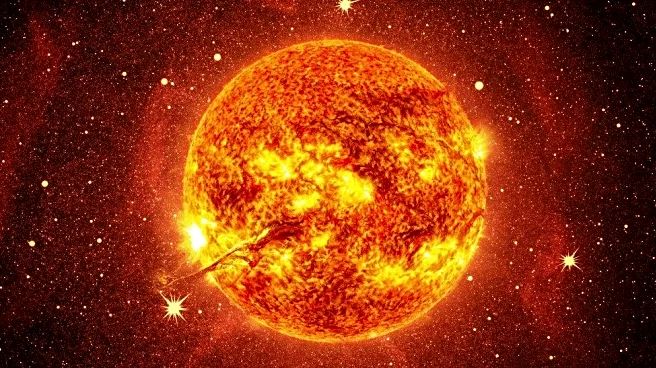What's Happening?
A surprise geomagnetic storm has reached strong levels, impacting Earth's magnetic field due to recent solar eruptions. NOAA has issued a G3 geomagnetic storm watch, anticipating further impacts from multiple
coronal mass ejections (CMEs) from sunspot region AR4274. The storm, triggered by a CME and a high-speed solar wind stream, has resulted in auroral activity across Europe, Canada, and the northern U.S. The M7.4 solar flare released a CME traveling at high speeds, expected to reach Earth soon, potentially causing another round of geomagnetic storming.
Why It's Important?
Strong geomagnetic storms can disrupt satellite navigation, high-frequency radio communications, and power systems, particularly at high latitudes. The potential for increased auroral activity in mid-latitudes highlights the broader impact of solar phenomena on Earth. This event underscores the importance of monitoring space weather and preparing for its effects on technology and infrastructure. The ability to predict and respond to such events is crucial for minimizing disruptions and ensuring the resilience of critical systems.
What's Next?
NOAA's G3 storm watch remains in effect, with expectations of further geomagnetic disturbances as additional CMEs interact with Earth's magnetic field. Stakeholders in technology and infrastructure sectors should remain vigilant for potential disruptions. The public is advised to watch for auroral displays, which may continue through the weekend. Ongoing monitoring and forecasting by NOAA will provide updates on the storm's progression and potential impacts.
Beyond the Headlines
The occurrence of geomagnetic storms and their effects on Earth may lead to increased interest in space weather research and its implications for technology and infrastructure. This event highlights the need for improved forecasting and preparedness strategies to mitigate the impact of solar activity on critical systems. Additionally, the visibility of auroras in regions not typically known for such phenomena may inspire public interest in space science and the natural world.
